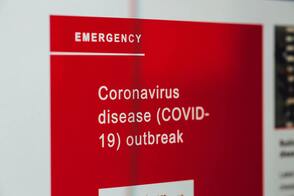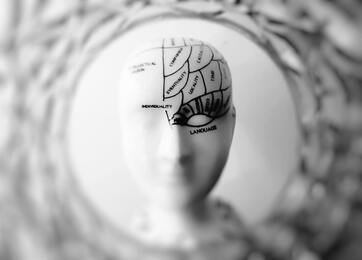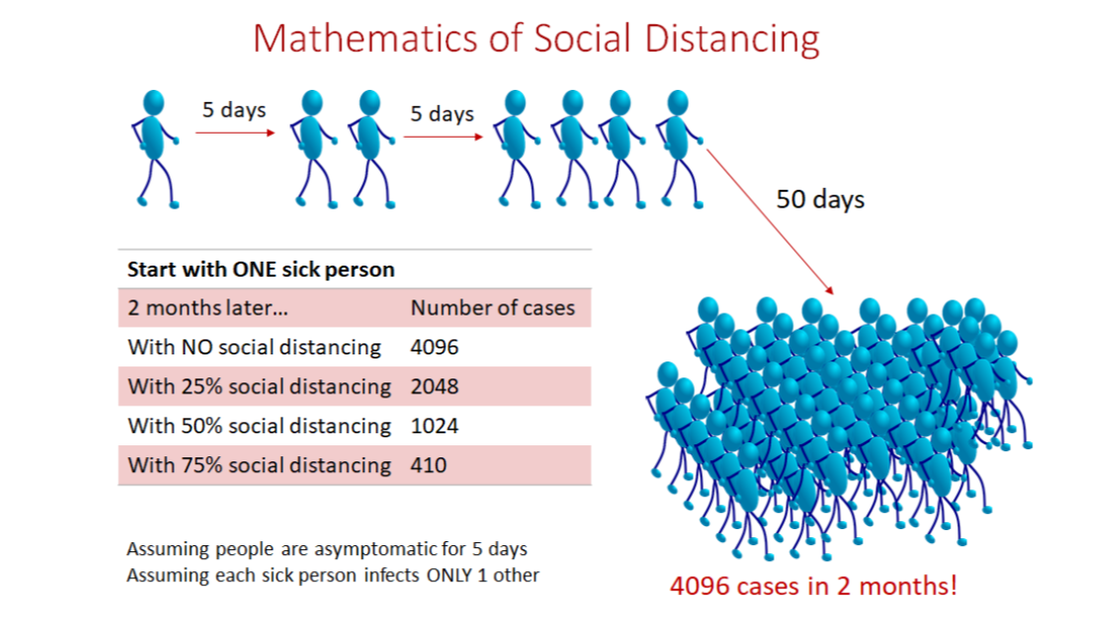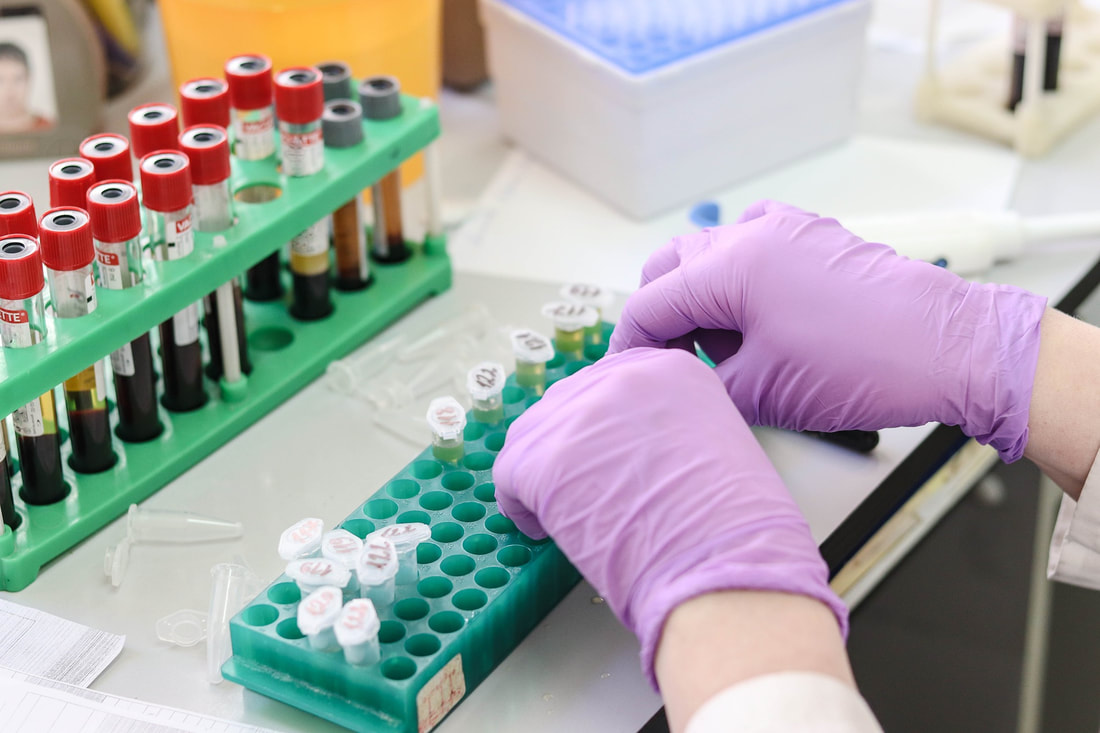|
BY: CAPRI MILLS Hi! My name is Capri Mills. I'm a junior in high school and have a passion for science, psychology, and writing. I also enjoy giving back to the environment and my community in any way I can. After high school, I plan to continue on a neuroscience path throughout college and beyond.  Recently, the COVID-19 pandemic hit its one-year mark, and it’s a subtle reminder of everything we’ve experienced in the past year, stress being the main part of that. And while Americans tend to be pretty stressed in general, the pandemic has brought stress levels to new heights. In a recent survey, 78% of adults reported that the coronavirus is a significant stressor in their life (“Stress in America™ 2020: A National Mental Health Crisis”). This number is clearly indicative of the current mental health crisis. Out of every generation, though, Gen Z seems to carry the most stress, as their future will be the most impacted by current decisions- ones they have little to no control over. Over 50% have reported feeling stressed about high suicide rates, presidential elections, and widespread sexual assault/harassment (“Stress in America™ 2020: A National Mental Health Crisis”). Now, when we tend to think of stress, we see it as something fleeting, coming and going with new changes and such. Unfortunately, stress is not this short-term. It can actually have long-lasting impacts on your life, which is quite concerning after hearing those statistics. Now, more than ever, it’s important to be aware of the effects of stress, as well as strategies to deal with it, with all of the political and mental discourse occurring. But before we get into the effects of stress, let’s state the facts on what stress actually is. When approached with danger, your brain floods your body with chemicals and hormones such as cortisol and adrenaline. This leads to an increase in heart rate, energy level, and blood pressure (“Chronic Stress Puts Your Health at Risk”). Back in the Stone Age, these increased vitals were a good thing, as they helped humans keep alert and face predators. Nowadays, however, stress signals aren’t actually needed most of the time they happen. Instead, they are merely a product of evolution that we’re stuck with for the time being. On top of all of this, a lot of the time, stressors don’t actually “shut off”. When the “threat” (such as a looming presidential election, worrying about being sexually assaulted, etc.) doesn’t go away within a certain time period. Your heart and blood pressure don’t return to their baseline before the next “stress attack” hits (“Chronic Stress Puts Your Health at Risk”; Dhabhar). This opens a whole other can of worms; stress begins to affect your mental health and body on a greater level. Long-term stress puts you at risk for anxiety, depression, and reduced happiness, and these are only the mental effects (“Chronic Stress Puts Your Health at Risk”). Physically, stress can weaken your immune system, trigger headaches and stomachaches, cause excessive sweating, tightness or soreness in joints, and more (Wellness Team). It can even become life-threatening; too much of that pesky hormone cortisol can cause stroke, heart disease, and asthma. Clearly, stress isn’t exactly the best thing. People tend to underestimate just how much of an impact stress can have, brushing their stressors away and claiming themselves to be fine. But this is only more detrimental in the long run. In order to avoid the adverse physical and mental effects of stress, it is necessary to identify key stressors in one’s life and try to manage, and possibly eliminate them. Fortunately, all hope is not lost. There are numerous doctor-approved strategies to treat and overcome stress. These include cognitive therapy, volunteering, eating healthy, creating strong friendships, trying yoga or meditation, and more (“Chronic Stress Puts Your Health at Risk”). Most of the time, stress doesn’t actually get you anywhere and only makes things worse, especially in the future. So, employing techniques like these will be incredibly helpful, and you’ll thank yourself in the long run. Currently, with the ongoing pandemic, it’s more important than ever to face and conquer stress. The bad news: stress can be super serious if left untreated. The good news: stress can certainly be handled and decreased. So don’t stress it. Works Cited “Chronic Stress Puts Your Health at Risk.” Mayo Clinic, Mayo Foundation for Medical Education and Research, 19 Mar. 2019, www.mayoclinic.org/healthy-lifestyle/stress-management/in-depth/stress/art-20046037.
Dhabhar, Firdaus S. “The Short-Term Stress Response - Mother Nature's Mechanism for Enhancing Protection and Performance under Conditions of Threat, Challenge, and Opportunity.” Frontiers in Neuroendocrinology, U.S. National Library of Medicine, Apr. 2018, www.ncbi.nlm.nih.gov/pmc/articles/PMC5964013/. “Stress in America™ 2020: A National Mental Health Crisis.” American Psychological Association, American Psychological Association, www.apa.org/news/press/releases/stress/2020/report-october. Wellness Team. “7 Strange Things Stress Can Do to Your Body.” Cleveland Clinic, Health Essentials from Cleveland Clinic, 7 Oct. 2020, health.clevelandclinic.org/7-strange-things-stress-can-body/.
0 Comments
BY: CAMERON YUEN Hello! My name is Cameron Yuen, a current senior in high school. I'm going to be attending Tufts University, and I intend on studying Computer Science. I want to use technology to incite change, whether it's bridging the digital divide, aiding public health or bolstering sustainability efforts. Outside of academics, I'm a competitive diver and an avid Overwatch player!  With life being anything but predictable in recent times, the advent of new COVID-19 vaccines only contributes more to the uncertainty. Scientists and doctors are preaching this modern mRNA vaccination method, but what does this even mean? What’s the difference? Is it safe? All questions will be answered, here. First off, it is important to understand what mRNA even is, and how that relates to vaccination. Short for messenger ribonucleic acid and a pivotal component in our cells’ protein production, it is “the intermediate step between the translation of protein-encoding DNA and the production of proteins by ribosomes in the cytoplasm” (Pardi 262). Essentially, it bridges the encoding and the expression of certain proteins in our cells. This is critical because viruses such as coronavirus contain what is called “spike proteins… [which are] found on the surface of the virus… [and] causes COVID-19” (“Understanding MRNA”). In the traditional method of vaccination, dead or weak viral particles with the aforementioned spike proteins will be injected into our body for our immune system to recognize as a possible threat. With the spike proteins working as blueprints, our bodies can then use them to produce the appropriate antibodies to stop future infections. Sinovac, a Chinese-produced vaccine, follows this method by employing dead coronavirus particles. First, they kill the cells with “beta-propiolactone,” removing their ability to replicate, but leaving their spike proteins “in-tact.” From there, the dead cells “are swallowed up by a type of immune cell called an antigen-presenting cell,” which essentially downloads the viral information, and creates the proteins to help destroy the infection (Corum and Zimmer). Although this way is more researched, it also requires far more resources, space, and time. Scientists already know of many viral antigens, but the sampling and replication of “target pathogens or antigens ha[s] to be produced in dedicated cell-cultures and/or fermentation-based manufacturing production processes,” which takes a lot of time and effort (“MRNA Therapeutic Areas”).  The new-age mRNA vaccines like Pfizer and Moderna possess key differences that could revolutionize immunology for years to come. Instead of injecting the viral particles, they contain mRNA that was developed in-vitro, or in a test tube, and coded to stimulate specific protein production in our cells. The mRNA “gives instructions” to our cells on how to produce viral antigen proteins to elicit an antibody-producing immune response, preventing present and future infections. In terms of COVID-19, it helps create a “harmless piece… of the spike protein,” making the injection of viral particles completely unnecessary (“Understanding MRNA”). But aside from just that, mRNA technology may allow for large-scale improvements over its counterpart in efficacy, discovery, and efficiency. mRNA can be encoded to address many viral proteins in a single dosage of a vaccine to produce more complex antigens which helps fight more complex viruses. This is called “multimeric antigen” production in which proteins with multiple polypeptide chains are created. For example, Moderna’s CMV vaccine has the capability to form a “pentameric protein complex that is a potentially critical antigen for immune protection against CMV” with the power of “six mRNAs” (Corum and Zimmer). And unlike the traditional method, new ways to experiment with preliminary-stage vaccines are far more simple and expend less with mRNA. Scientists are capable of beginning designs through computer simulations, or “in silico,” which rapidly speeds the production of schematics, “dramatically accelerat[ing]... vaccine selection.” And along with that, traditional vaccines demand “dedicated production processes, facilities, and operators,” while mRNA vaccines’ more consolidated manufacturing can allow for “a single facility” (“MRNA Therapeutic Areas”). But as promising as this all sounds, it is imperative to remain prudent. Although mRNA research is not new, it only recently has been explored out of the field of oncology. mRNA technology is relatively new to combat viruses like COVID-19, and that raises questions on its effectiveness, as tumor research efforts vastly differ from that of viral ones. As of right now, it is not specifically known if the vaccine will be strong enough to evoke a “sufficiently protective immune response,” or simply “which quantities of mRNA will be needed to [fight viruses]” (“Five Things You Need to Know”). But just like how scientists vigorously tested and refined the traditional method, we’ll eventually reach confidence in our understanding of mRNA vaccines. Works Cited
Pardi N, Hogan MJ, Porter FW, Weissman D. mRNA vaccines - a new era in vaccinology. Nature reviews. Drug Discovery. 2018 Apr;17(4):261-279. DOI: 10.1038/nrd.2017.243“Understanding MRNA “COVID-19 Vaccines.” Centers for Disease Control and Prevention, Centers for Disease Control and Prevention, www.cdc.gov/coronavirus/2019-ncov/vaccines/different-vaccines/mrna.html. Corum, Jonathan, and Carl Zimmer. “How the Sinovac Vaccine Works.” The New York Times, The New York Times, 24 Dec. 2020, www.nytimes.com/interactive/2020/health/sinovac-covid-19-vaccine.html. “MRNA Therapeutic Areas in Infectious Diseases.” Moderna, www.modernatx.com/pipeline/therapeutic-areas/mrna-therapeutic-areas-infectious-diseases. “Five Things You Need to Know about: mRNA Vaccines.” Horizon, horizon-magazine.eu/article/five-things-you-need-know-about-mrna-vaccines.html. BY: DILARA HACIOGULLARI Hi! My name is Fatma Dilara Haciogullari. I’m currently a high school sophomore who is passionate about research, biology, and cybersecurity. I cherish learning new things and sharing my knowledge with others.  The COVID-19 pandemic has taken, and continues to take, the lives of many around the globe. Some manage to survive this pandemic; however, new research is suggesting that there may be long-term neurologic consequences to surviving the virus. Patients that test positive for COVID-19 exhibit some of the following conditions related to the brain: confusion, loss of consciousness, seizures, stroke, loss of smell and taste, headaches, trouble focusing, and behavioral changes (Collins). The blood-clotting system in these patients is highly abnormal in that many develop blood clots. Blood clots pose a high risk to patients as clots can block or narrow arteries leading to the brain, thereby also increasing the risk of stroke. Strokes, especially silent ones, are common within patients, especially those over 70, and they are a risk factor for both dementia and larger strokes. Silent strokes usually affect the wiring between brain cells that allow them to communicate with different parts of the brain. This wiring is vital for focus, and attention loss will occur when they are harmed (Budson). Getting in enough oxygen through damaged lungs also makes patients vulnerable to hypoxic brain damage. According to a study done by Zhou et al., this damage continues to affect patients even after they recover from the virus. This study investigated various aspects of cognitive function in 29 individuals who have recovered from COVID-19. In sustained attention, the capacity to attend to essential information, they found a recurring deficiency (Zhou et al.). The explanation for this, Zhou et al. concluded, could have been related to the inflammatory mechanism. This is, nevertheless, not to reject the possibility that lack of oxygen or silent stroke contributes to the long-term, detrimental effect on the neurological functioning of recovered COVID-19 patients. Works Cited Collins, Francis. "Taking a Closer Look at COVID-19's Effects on the Brain." National Institutes of Health. U.S. Department of Health and Human Services, 26 Jan. 2021. Web.
Budson, Andrew E., MD. "The Hidden Long-term Cognitive Effects of COVID-19." Harvard Health Publishing. Harvard Medical School, 08 Oct. 2020. Web. Zhou, H.; Lu, S.; Chen, J.; Wei, N.; Wang, D.; Lyu, H.; Shi, C.; Hu, S. The Landscape of Cognitive Function in Recovered COVID-19 Patients. Journal of Psychiatric Research 2020, 129, 98–102. BY: SARAH WANG Hello! I'm Sarah and a senior in high school interested in research biology and education equity. I love to teach others using my knowledge and resources, while also learning and growing as a scientist myself! In early 2021, NASA’s Wallops Flight Facility in Virginia is projected to initiate CAPSTONE, NASA’s Cislunar Autonomous Positioning System Technology Operations and Navigation Experiment. CAPSTONE will launch a “microwave oven-sized” CubeSat that weighs only 55 pounds. The CubeSat will be the first spacecraft to test a special elliptical lunar orbit. It will take approximately three months for CAPSTONE to reach its target destination, and it will remain in orbit for at least another six months in order to fully understand the orbit’s characteristics. CAPSTONE will validate NASA’s model calculations on both power and propulsion requirements for spacecraft orbit, getting rid of any uncertainties. The unique orbit that CAPSTONE will follow will exhibit an efficient path to the Moon from the Earth and will also establish an ideal staging area for missions to the Moon. It will demonstrate inter-spacecraft navigation services that will potentially allow spacecraft to pinpoint their locations relative to the Moon without exclusive reliance on tracking from Earth. It will, simultaneously, test the reliability of communication abilities with Earth. By testing navigation technologies while exploring this unique orbit, CAPSTONE will reduce risk for future spacecraft missions. NASA’s CAPSTONE is the pioneer for a future of ever-expanding possibilities for smaller and more affordable space exploration missions to the Moon and various destinations throughout the solar system. Students can also get involved with the mission to open doors to endless opportunities for space exploration. The U.S. Department of Education launched the CTE Mission, a new space exploration mission challenge for high school students. For more information about the CTE Mission and how to participate, refer to the below information! Source: https://www.nasa.gov/directorates/spacetech/small_spacecraft/capstone U.S. Department of Education Launches Space Mission Challenge for High School Students |
Quest Student Research InstituteOn Science, Computation, Medicine, and Academic Success Archives
January 2022
|







 RSS Feed
RSS Feed